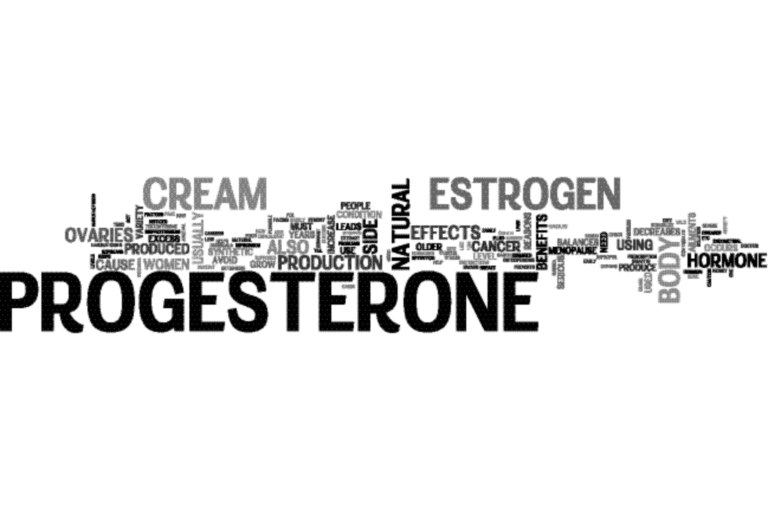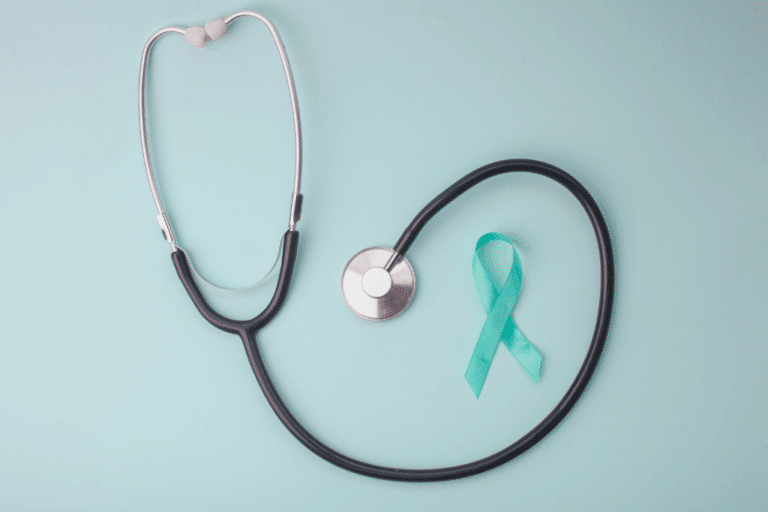Progesterone is the first hormone to take a nosedive when you enter perimenopause. Because ovulation becomes less likely, estrogen begins to run the show and that’s when the fun begins: breast tenderness, heavy bleeding, anxiety, mood swings, fatigue, and those 2 a.m. wide-awake nights.
Most doctors only think of progesterone as the “pregnancy hormone” or prescribe it with estrogen as part of MHT to protect the uterus. But here’s the truth: progesterone is about way more than your uterus. And if you’ve had a hysterectomy, this article is for you, too, even though your uterus is gone.
Progesterone protects your brain, bones, metabolism, sleep, and mood. It’s a healthspan hormone—and understanding it is important for women in midlife.
Here’s your A to Z guide to what progesterone really does for you.
A: Anxiety Relief
Your built-in chill pill. Progesterone calms the nervous system and reins in racing thoughts.
B: Breast Protection
Unlike synthetic progestins, bioidentical progesterone may actually lower your breast cancer risk.
C: Cortisol Connection
Your body can convert progesterone into cortisol if it needs backup stress support.
D: Delivery Options
Capsules, creams, troches, oils…lots of ways to use it depending on your needs.
E: Energy & Metabolism
It helps fire up your thyroid and supports metabolism (hello, midlife energy).
F: Feel-Good Factor
It stabilizes mood, lifts the cloud of irritability, and helps you feel more like yourself.
G: Gut Health
Progesterone is calming for your gut, too. It reduces inflammation and supports healing.
H: Hysterectomy Myth
Even without a uterus, progesterone benefits your brain, bones, heart, and metabolism.
I: IUD Confusion
IUDs don’t contain progesterone—they contain progestins, which are not the same thing.
J: Joint & Bone Support
It stimulates bone formation and can ease joint pain—critical for staying strong as you age.
K: Keeps Estrogen in Check
Estrogen loves to grow things. Progesterone steps in to keep that growth in balance.
L: Lighter Periods
Tames the heavy bleeding that can hijack your life.

Want to create a custom longevity health plan?
You’re in the right place.
I can help you with a functional approach to midlife women’s health including hormone balance, gut health, autoimmune issues, bone health, heart health and more!
M: Migraine Relief
Progesterone often calms estrogen-driven migraines.
N: Nerve & Brain Health
Protects nerve cells and supports memory. Think brain fog prevention.
O: Ovulation Link
No ovulation = no progesterone. That’s why symptoms spike in perimenopause.
P: Progestin ≠ Progesterone
Progestins are imposters. They don’t have the same protective benefits and may even increase risk.
Q: Quieting Anxiety
Progesterone crosses into the brain, dialing down mental chatter.
R: Rhythm Regulation
Helps curb heart palpitations that sometimes show up in perimenopause.
S: Safe & Well Tolerated
Bioidentical progesterone has a great safety record. The most common side effect? Drowsiness.
T: Testing Accuracy
Blood spot testing is best for accurate monitoring.
U: Uterine Protection
Yes, it keeps the uterine lining in check with estrogen therapy—but that’s just the tip of the iceberg.
V: Vaginal Route
A highly absorbable option that works well for many women.
W: Weight & Temperature
Slightly raises body temperature, which supports fat metabolism.
X: Xenoestrogen Defense
Helps buffer the effects of hormone disruptors in plastics and pesticides.
Y: Yam Origins
Bioidentical progesterone is made from wild yam extract in a lab. Same chemical structure as your own hormone.
Z: ZZZs Restored
Oral progesterone can bring back the deep, restorative sleep you’ve been missing.
Why This Matters for Longevity and Vitality
Here’s the bottom line: progesterone isn’t just a “reproductive” hormone. It’s a longevity hormone . It protects your brain, bones, and emotional well-being. It helps you feel calmer, sleep better, and stay sharper and stronger; not just now, but for decades to come.
You don’t have to white-knuckle your way through perimenopause or menopause. Progesterone can make a huge difference!
Dr. Anna Garrett is a menopause expert and Doctor of Pharmacy. She helps women who are struggling with symptoms of perimenopause and menopause find natural hormone balancing solutions so they can rock their mojo through midlife and beyond. Dr. Anna is the author of Perimenopause: The Savvy Sister’s Guide to Hormone Harmony. Order your copy at www.perimenopausebook.com.
Dr. Anna is available for 1-1 consultations. Find out more at www.drannagarrett.com/lets-




